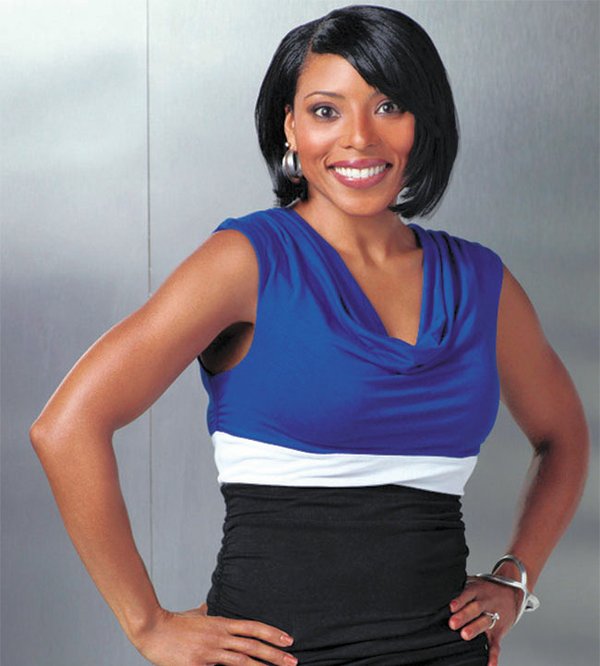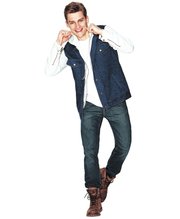Q&A
A Q&A With Macy's 'Fashion Star' Caprice Willard
The creative energy is raw, and the fashion decisions are made under tight deadlines. In the end, NBC’s latest reality competition, “Fashion Star,” gives an inside view of how big-name store buyers make their decisions and help new designers make an incredible journey into some of the most prominent retail chains in the United States.
Caprice Willard, Macy’s vice president/regional planning manager for women’s apparel The concept is this: Three buyers—one from Macy’s, one from Saks FifthAvenue and one from Express—view styles created by budding designers. Then the buyers, competing in an auction-like scenario, opt to bid—or not—on the items for their store. Bids can go anywhere from $40,000 to more than $100,000.
One of those store buyers is based in Los Angeles. Caprice Willard, Macy’s vice president/regional planning manager for women’s apparel, has appeared on both seasons of the show, which debuted last year.
Willard shared some of her observations with California Apparel News Senior Editor Deborah Belgum about what makes a good design and what nudges her to hit the bid button for designs that end up on the Macy’s website.
When judging the items presented on “Fashion Star,” what elements should they have to sell successfully at Macy’s?
I would say the No. 1 thing I focus on is what the Macy’s customer is looking for. She is interested in trend-right, fashion-forward merchandise, but she also wants it to be versatile. She wants to be able to wear it multiple ways.
It is very important to her that it is an investment piece that can be worn consistently and to update her present wardrobe. Our customer comes to Macy’s and expects us to be the experts on fashion, to educate her about what to add to her wardrobe to update her look.
Of the designers you have chosen to sell at Macy’s, which ones have sold the best, and why?
Honestly, so far every single designer has performed beyond our expectations. It’s too early to say which one has been better or worse.
The first season was phenomenal, and we were selling out very quickly. This season is very similar. The customers are responding to designs for both men and women. We are thrilled with the performance and hope it continues for the balance of the season.
How many designers have you brought in so far?
During the first four episodes, we have brought in about six designers.
One of the design teams we have brought in was JesseRay [Vasquez] and Garrett [Gerson].They are Malibu- [Calif.] based designers. They very much understand the Southern California lifestyle and the customers’ needs for casualwear that allows the customers to be more comfortable and still pull it together.
The Malibu team designs with an understanding that this needs to be sold across the country.
How many units do you normally buy?
It is opened-ended based on the size of the buy. We don’t have a set limit on units. It is based on the items.
Are these designs sold only online or can they be found in Macy’s stores?
This season we decided to put our weekly purchases 100 percent online. We were selling out so fast last year that we decided it would be easier for customers in all our markets to go immediately online and get that immediate gratification. Come the finale, we will have that product online and in select stores.
What kind of price points are you shooting for when selecting these new designs?
It is all over the board. At Macy’s we do sell designers at all different price points and ranges, which is the great thing about the store. We do try to cater to our different markets and demographics. And that holds true for the “Fashion Star” designers’ creations. We determine what we think the value is for the design.
(Macy’s prices for some of its “Fashion Star” designs range this season from $79 for a caftan dress created by Hunter Bell to $129 for a slash dress by Daniel Silverstein.)
In general, what are some mistakes that any new designer makes after they get an order from a big department-store chain such as Macy’s?
I think the biggest mistake they make is that they are so focused on getting that order that they don’t always think about the infrastructure and back-of-house part. They need to know how to service a major department store like Macy’s.
It is not so much about their design ability. They are more than capable of designing for our stores. They need to be able to service the high demand.
We have 800 stores. At Macy’s, we do understand that with new designers there is a challenge. So we have created a program targeting new designers to help them get through that process to make sure they are 100 percent ready.
Is selecting a new designer on “Fashion Star” any different
from how you select a new designer who is not on the show, or is it the same process? Why or why not?
Honestly, it is the exact-same process, which makes “Fashion Star” a great snapshot of what happens in the real world of finding new designers.
We use the same criteria to look for new designers who are fresh and new and understand the Macy’s customer.
After a “Fashion Star” designer is selected to sell their merchandise at Macy’s, how does the department store help them fill the orders with such things as sourcing or working with EDI?
Through “Fashion Star,” we have them partner up with our Macy’s merchandising group, and we are able to leverage our internal structure to help them create the clothes.
How has “Fashion Star” helped business for Macy’s? Have you seen an upswing in customers visiting the store?
It is another way of tapping into an existing customer and a way to reach out to new customers. Since the majority of sales are done online, many purchasers who haven’t normally gone to [www.macys.com] go to the website. And many of them become repeat customers. So they become part of our Macy’s family. We have been very pleased with the performance of the designs with existing customers and in attracting new customers.
Why did Macy’s decide to participate in “Fashion Star”?
Macy’s is always looking for new and innovative ways to touch our customer, capture her mind, and get her excited about fashion. We felt this was a way to extend our national profile. We are a national department store, and NBC is a national network.
Why is it important to have new designers and labels in a store?
The customer is ever-changing and evolving. And as much as we are fortunate to have Michael Kors, Calvin Klein and Rachel Roy in our arsenal, there are still white-space opportunities.
We love being able to nurture and develop new designers. We feel as a major department store, one of our responsibilities is to identify new designers so they can be the next Michael Kors or Calvin Klein.
That is how we stay fresh and relevant and capture the hearts and minds of fashion lovers.
Has a tough economy made it harder or easier to find new designers?
I don’t think the economy has had any impact on there being a number of new designers available at any given time. That creative spirit is always there and almost recession-proof. There are always really creative graduates coming from the fashion institutes. Or they are working behind the scenes on a label and have a desire to strike out on their own.
It is challenging to get into a department store as big as we are. It can be hard for the little guy to find his or her niche. But we see finding new designers as a big plus.
How does a designer get into Macy’s?
What is the most beneficial is designers should have a clear point of view and vision of their customer. I like to see designers who have had some success, be it online, which is a very cost-effective way to get your brand out there, or have some success at smaller specialty stores to test the appetite and viability of their designs and tweak it as needed.
Then they should take their great ideas and go to the trade shows. That is our No. 1 way to find new designers. We source at shows such as MAGIC,Coterie, Designers and Agents and other trade shows.
What have you learned from being a “Fashion Star” buyer?
I have been on the show almost two years now, and we always say, “No day is the same.”
You always have to be up for anything, but being on “Fashion Star” took it to a whole different level. I have to make in-the-minute, on-the-spot decisions without as much time to dig into the nuance of a particular design as I would normally.
It has been an interesting challenge and something I have been able to apply in my day-in and day-out work. You always need the analysis behind a new decision, but the ability to make those quick design decisions means sometimes magic happens.
For me personally, it has been a wonderful way to reinvigorate myself as a buyer and a retailer.























